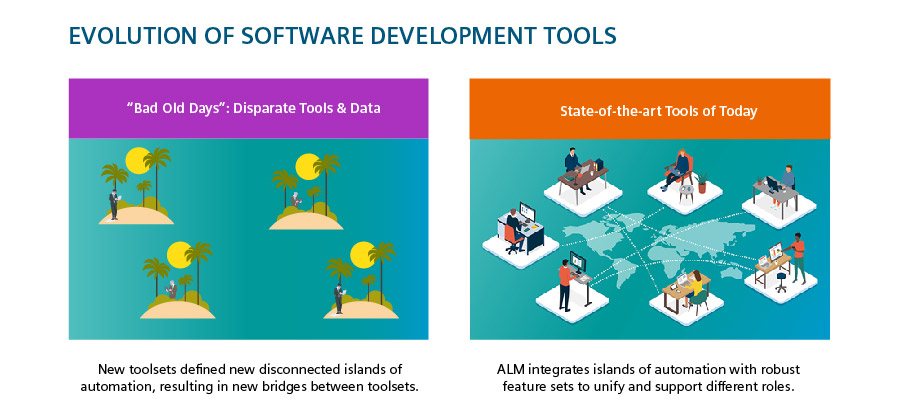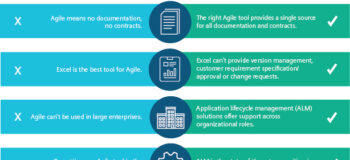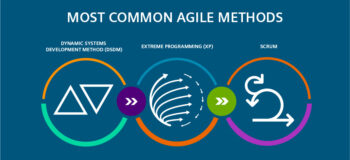The evolution of software development tools and integrating Agile with ALM

Disparate software development tools and data have created disconnected isles of automation for each project role, covering test management, change request handling, customer support, contracts negotiations, and so forth. Legacy vendors cannot effectively integrate the data repositories because they are a patchwork of expensive, unreliable one-off bridges between islands. As previously discussed, developers code with Agile tools, but organizations still need non-developers to refine requirements, submit changes, forecast, and manage projects, but how?
State-of-the-art software development tools: application lifecycle management (ALM)
Application lifecycle management (ALM) is the state-of-the-art proposition for software development tools. ALM solutions offer similar characteristics: they aim to be broad with comprehensive feature sets and support for multiple project roles and deep, extensive support for the feature set needed by each project role.
Today’s ALM solutions leverage consolidated linked data and work items that can be queried and presented in standard reports and offers corporate governance, risk management, compliance management, and complete project progress tracking. In essence, ALM solutions provide broad support to people covering different roles in software development, deep feature sets and integrated functionalities to bridge the information islands created by the various tools.
Integrating Agile with ALM
Geographically distributed projects and teams adopting Agile methods benefit from effective ALM, and hybrid processes allow for flexibility while allowing for greater project control. Agile development teams often hesitate to adopt ALM solutions for many reasons:
- Legacy ALM tool integrations run batch information transports, preventing instant notification of changes
- ALM solutions support different groups with different tools, while Agile processes require the same tool and same method
- Agile methods enable interchangeability of people while ALM leans more toward project role specialization
- Most available software development tools are inadequate for Agile teams because they lack integration with broader corporate processes.
- Insulating Agile teams is challenging as they are part of broader and not-at-all agile corporate processes.
So, what can teams do? Use the latest software and integrate Agile concepts and methodologies someday?
A better way: leveraging the Live approach
The Live approach can solve the problem of integrating Agile development teams into a broader corporate infrastructure by providing developers with live access to corporate information via the tools they need. With this foundation, organizations can provide broad support to people covering different roles and simultaneously enable developers to continue working in Agile methodologies.
Read this whitepaper to learn more about the Live approach and how it can balance development and corporate goals.




